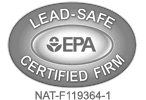How Do UV Light Indoor Air Quality Products Work?

Light exists in various forms. It consists of components known as photons that vibrate. The speed of photon vibration determines the distance from one light wave to the next (wavelength). The faster the photon vibration the shorter the wavelength, and the slower the vibration the longer the wavelength. The wavelength of visible light, for instance, ranges from 400 to 700 nanometers while that of UV light measures between 100 and 400 nanometers.
What Is UV Light?
Ultraviolet light is a form of electromagnetic radiation designated between visible light and X-rays in the electromagnetic spectrum. Since it has shorter waves, UV light is invisible to the human eye. UV light is responsible for summer tans and sunburns. UV light exists in three bands: UV-A, UV-B, and UV-C.
UV-A
This type of ultraviolet light consists of black lights that have wavelengths between 315 and 400 nanometers. UV-A light produces fluorescence in several substances. For instance, UV-A makes black-light posters glow.
UV-B
UV-B is the middle-wave UV with wavelengths between 280 and 315 nanometers. UV-B is known to cause suntan, sunburns, and skin cancer in extreme conditions.
UV-C
UV-C is the short-wave ultraviolet light band and also the strongest. It has a wavelength that ranges from 100 to 280 nanometers. As the strongest UV band, UV-C has germicidal effects. It kills microorganisms found in the air and on surfaces. UV-C is able to interfere with the nucleic acid of organisms such as common mold, influenza, salmonella enteritidis, and rhinoviruses.
Owing to its germicidal properties, UV-C has several applications in air purification, disinfection, and sterilization in food-processing facilities, water treatment plants, and laboratories. UV-C is also used in indoor air quality products.
Indoor Contaminants
Our indoor air consists of airborne pollutants and bioaerosols (small microorganisms), which cannot be filtered out by normal air conditioners. As a result, they find their way into our homes and cause allergies and respiratory issues. Some of these pollutants and bioaerosols are bacteria, dust mites, fungi, mildew, mold spores, pet dander, ash, soil, carbon monoxide, and tobacco smoke.
How UV Light Products Work
UV lamps are usually placed in HVAC systems to conduct air-purifying duties. These lamps emit UV-C, which is germicidal. When exposed to UV light, the cellular structure of microorganisms is damaged, thereby rendering them inactive and less harmful to the human body.
UV lights are usually installed inside the ductwork and coil systems. In the ductwork, UV-C light destroys microorganisms while at the coil system, microbial growth is hindered.
In HVAC systems, the air is first purified before it is released to your indoor air, improving your home’s indoor quality. If your household has occupants with allergies or respiratory issues, the attacks will be reduced significantly, thanks to these air purifiers. Apart from indoor contaminants, some systems can eliminate chemical vapors, harmful odors, and VOCs.
For microbial growth, UV-C light targets the growth of microbes that thrive due to the dark and wet conditions in the AC unit. The light usually bathes the coils, ridding them of mold and fungi. UV light should have direct contact with the microorganisms to enhance the kill rate of the system. With only partial exposure, your indoor air will not be free from pollutants.
Whole-house air purifiers work exceptionally well as they clean the air in your entire home. Standalone room purifiers only clean the air in the room they are placed.
Benefits of UV Light Air Purifiers
UV lamps have been used extensively in medical facilities, food processing facilities, and water treatment plants. In homes, these lamps can:
- Reduce respiratory issues
- Reduce the spread of airborne diseases
- Reduce microbial growth in HVAC units
- Reduce HVAC repair and maintenance costs
- Reduce the use of harsh detergents
- Reduce harmful odors
- Improve HVAC functioning
How Effective Are Air Purifiers?
The effectiveness of air purifiers is reliant on the placement of the UV lamps, the intensity of UV light, the material used for the lamp bulbs, and the number of times pollutants are exposed to light. As discussed, UV light damages the DNA structure of microbes, destroying their ability to cause diseases. However, UV light products are not entirely effective against all types of indoor pollutants.
UV lamps are effective in deactivating some forms of bacteria and mold, but most are resistant. For bacteria and mold spores to be destroyed completely, they should be exposed to high-intensity UV light for long hours.
When it comes to allergens, UV air purifiers cannot eliminate allergens because allergens such as fumes, dust, cigarette smoke, and pet dander are not susceptible to UV light.
Volatile organic compounds found in paints, varnishes, cleaning products, and cosmetics are also immune to UV radiation. In fact, some of these VOCs, when exposed to UV light, can generate more harmful elements.
Therefore, UV air purification is a small fraction in a comprehensive indoor air quality system. This means you should use a UV lamp together with other appliances such as high-performing filters (HEPA) and carbon filters for improved air quality.
Disadvantage of UV Air Purifiers
Some UV lamps can break down oxygen into ozone, which can have adverse effects on occupants with respiratory problems. UV lamps with bulbs made of quartz and titanium usually prevent this problem.
What Makes a Good UV Air Purifier?
When shopping for a UV light indoor air quality product, narrow down your scope with these factors:
- High intensity: UV lamps that output high-intensity UV lights are the best. To eliminate microbes, intense radiation is required.
- Ease of installation: UV lamps from various manufacturers have different installation requirements. While some require you to drill holes, others have magnetic brackets to ease installation even further.
- Ozone generation: Check for UV lamps that eliminate ozone generation for better indoor air quality.
- Power consumption: UV lamps employ different technologies, so their power consumption abilities are also different. UV lamps with titanium dioxide reflectors in their bulbs are efficient energy savers. Also, consider low-watt bulbs to save energy.
- Add-ons: UV lamps with extra features are better than those with standard features. Some UV light products have extra features such as light indicators for burnt bulbs.
Can UV Light Air Purifiers Kill Coronavirus?
Since the Center for Disease Control concluded that the primary method of COVID-19 transmission is via airborne means, UV-C light air purifiers have come into the limelight. While these air purifiers have disinfecting capabilities, they are recommended as additional measures to help prevent airborne transmission. Social distancing and wearing masks are still the best preventive measures for COVID-19.
Additionally, the EPA has not approved UV light air purifiers to be effective against SARS-CoV-2, the virus that causes COVID-19.
Should I Install a UV Light Air Purifier?
UV light indoor air quality products are effective against some pollutants and ineffective against others. However, having them in your home means there will be few microbes floating around. Allergies and respiratory problems will also be kept to a minimum.
Contact Us Today!
To find out more about UV lamps, contact Brennan Heating & Air Conditioning. We have served our Seattle clients with heating and air conditioning services for decades. We also offer 24/7 emergency services for heat pump installation, HVAC installation, and air duct cleaning. Contact us for a free energy consultation, too.







